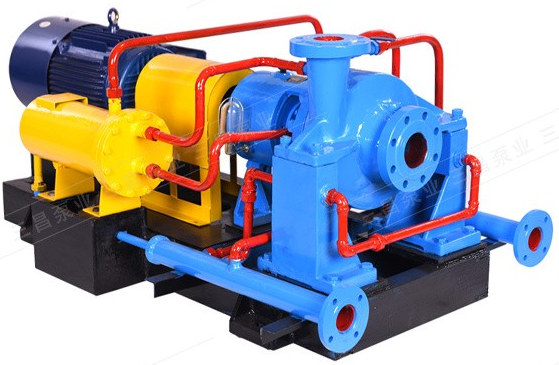How often should a high-temperature circulation pump be replaced?
Category: Water pump knowledge
2025-08-23
In industrial production and laboratory applications, high-temperature circulation pumps, as one of the key devices, undertake the important tasks of transporting high-temperature media and maintaining system circulation. The stability and durability of their performance are directly related to production efficiency and the accuracy of experimental results. However, with increased usage time, high-temperature circulation pumps gradually lose their optimal working condition due to wear, aging, and other factors.

1. Working Principle and Importance of High-Temperature Circulation Pumps
High-temperature circulation pumps usually use mechanical seals or magnetic drive seals to ensure that the medium does not leak in high-temperature environments. They generate power through impeller rotation, transporting high-temperature liquids (such as water, heat transfer oil, etc.) from the suction end to the discharge end, forming a closed-loop or open-loop circulation system. In this process, pump body materials, sealing structures, and motor efficiency are key factors determining pump performance.
In many occasions such as industrial cooling systems, chemical reactors, and thermal oil heating systems, the efficient and stable operation of high-temperature circulation pumps is the cornerstone for ensuring production continuity and product quality. Once the pump fails, it may not only cause system shutdown but also trigger safety accidents. Therefore, proper maintenance and timely replacement of high-temperature circulation pumps are crucial.
2. Factors Affecting the Lifespan of High-Temperature Circulation Pumps
The lifespan of high-temperature circulation pumps is influenced by multiple factors, mainly including:
1. Working Environment: The temperature, pressure, corrosiveness of the medium, and solid particle content can accelerate pump wear. For example, high temperature and corrosive media accelerate the aging of pump body materials and seals.
2. Usage Frequency and Maintenance Condition: Long continuous operation time, lack of regular maintenance, or improper maintenance will shorten the pump's service life.
3. Quality of the Pump Itself: Manufacturing materials, design precision, and production processes directly affect the pump's performance and durability.
4. Professional Level of Operators and Maintenance Personnel: Correct operation methods and timely troubleshooting can effectively extend the pump's service life.
3. Criteria for Determining Replacement Timing
Determining whether a high-temperature circulation pump needs replacement is usually based on the following points:
1. Performance Decline: Reduced pump output flow, decreased head, and lowered efficiency that cannot meet system requirements.
2. Increased Noise and Vibration: Internal wear of the pump body, bearing damage, or seal failure causing abnormal noise and vibration.
3. Leakage: Aging or damage of seals leading to medium leakage, affecting system pressure and efficiency, and even causing environmental pollution.
4. Increased Energy Consumption: Decline in pump efficiency directly leads to increased motor energy consumption, making long-term operation uneconomical.
5. Preventive Maintenance Plan: Based on the manufacturer's recommended maintenance cycle and service life, combined with actual usage, formulate a preventive replacement plan.
4. Recommendations for Replacement Cycle
Due to many influencing factors, there is no absolute fixed replacement cycle for high-temperature circulation pumps. Generally, depending on pump quality, working environment, and maintenance condition, the replacement cycle may range from 2 to 10 years. High-end brand pumps, under good maintenance conditions, can be used for more than 10 years. However, some low-end products or those in harsh working environments may need replacement within 2-3 years.
Users are advised to refer to the maintenance manuals provided by pump manufacturers and develop personalized maintenance plans based on actual application conditions. Regular pump inspections, cleaning, lubrication, and seal replacement can effectively extend the pump's service life. At the same time, establishing operation records and fault analysis archives helps to detect potential problems in time and avoid losses caused by sudden failures.
The replacement cycle of high-temperature circulation pumps is a result of comprehensive consideration of multiple factors. Through scientific management and maintenance, the pump's service life can be maximized, improving system stability and economy. Users should value preventive maintenance work for pumps and flexibly adjust replacement strategies based on actual conditions to ensure smooth production or experimentation. Ultimately, choosing high-quality pump products and professional service providers is the cornerstone for ensuring the long-term stable operation of high-temperature circulation pumps.
RELATED INFORMATION
2025/08/22
2025/08/21
Recommend Products
Contact Us
Free Hotline:0086-13307481676
Fixed telephone:0086-13307481676
Mobile:0086-13307481676(WeChat)
E-mail:sales@sanchangpump.com





